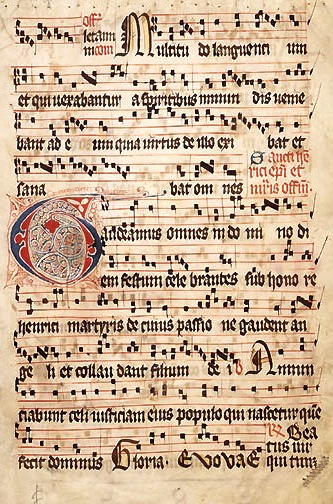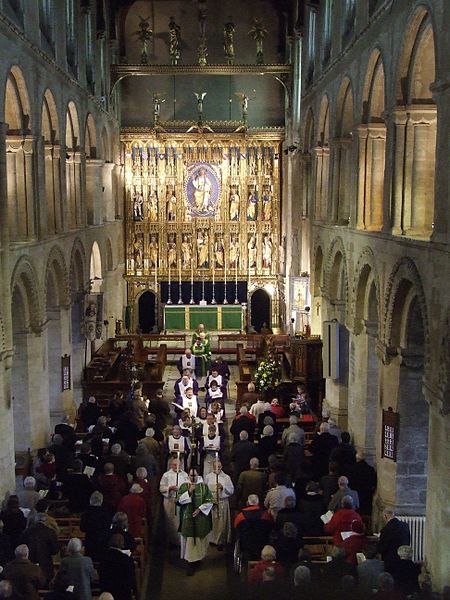Gregorian Chant
by Andrew Boyd
Today, plain and simple. The University of Houston's College of Engineering presents this series about the machines that make our civilization run, and the people whose ingenuity created them.
It's easy to take the rich textures of today's music for granted. Whether listening to a symphony or a rock band, the many layers of instruments and vocals create complex, captivating harmonies. How boring music would be if everything we listened to was mere melody — a lone voice floating on the wind.
Yet for much of history that's exactly what music consisted of. In western civilization we see this quite starkly in the music of the Roman Catholic Church. Cantus planus, or plainchant, refers to the form of music used in Church liturgy for almost a thousand years. Plainchant could be sung by one or many voices, but always consisted of a single, unaccompanied melody.
[audio: Veni Creator Spiritus, vocal ensemble Coral V'rtice]
Many different plainchant traditions developed, but central to Church history, and by extension to the history of western music, was Gregorian chant. Gregorian chant is distinguished by its own stylistic elements, but also as the result of formal efforts by the Church to capture and codify plainchant for Church liturgy. It led to the development of an early form of musical notation that bears many similarities to our present notation. Gregorian chant is traditionally credited to the efforts of Saint Gregory the Great, who served as Pope at the turn of the seventh century. However, its actual origins remain open to debate.

Much of what is popularly considered Gregorian chant is actually organum. Organum permits the use of more than a single melodic line. The harmonies are often quite simple, but organum proved an important milestone on the road to modern music.
[audio: Submersus jacet Pharao, Anne Delafosse]
The use of Gregorian chant waned in the late Middle Ages as it was supplanted by ever more elaborate musical forms. But it never altogether disappeared. Gregorian chant is no longer required as part of Roman Catholic liturgy, but its use is still encouraged.
And it has a following beyond church walls. In 1994 the Angel record label released a recording of Gregorian chants performed by Spanish monks. Marketed as a remedy for stress, it went triple platinum in the U.S. and sold six million copies worldwide. A similar feat was achieved by Austrian monks in 2008, who also sold millions of recordings, mostly in Europe.

I for one am glad music's evolved beyond the limited structures found in plainchant. Still, its haunting simplicity coupled with the acoustics of stone abbeys or cathedrals is admittedly transcendent.
[audio: Responsorium "Libera Me," The Cistercian Monks of Stift Heiligenkreuz]
I'm Andy Boyd at the University of Houston, where we're interested in the way inventive minds work.
(Theme music)
Notes and references:
Gregorian Chant. Wikipedia. https://en.wikipedia.org/wiki/Gregorian_chant. Accessed January 15, 2013.
The Gregorian Chant: An examination of the ancient musical and spiritual tradition. From the Cross Rhythms website. Accessed January 15, 2013.
Plain Chant. From the Old Catholic Encyclopedia, taken from this Wikisource website. Accessed January 15, 2013.
All pictures are from Wikimedia Commons.
This episode was first aired on January 17, 2013.